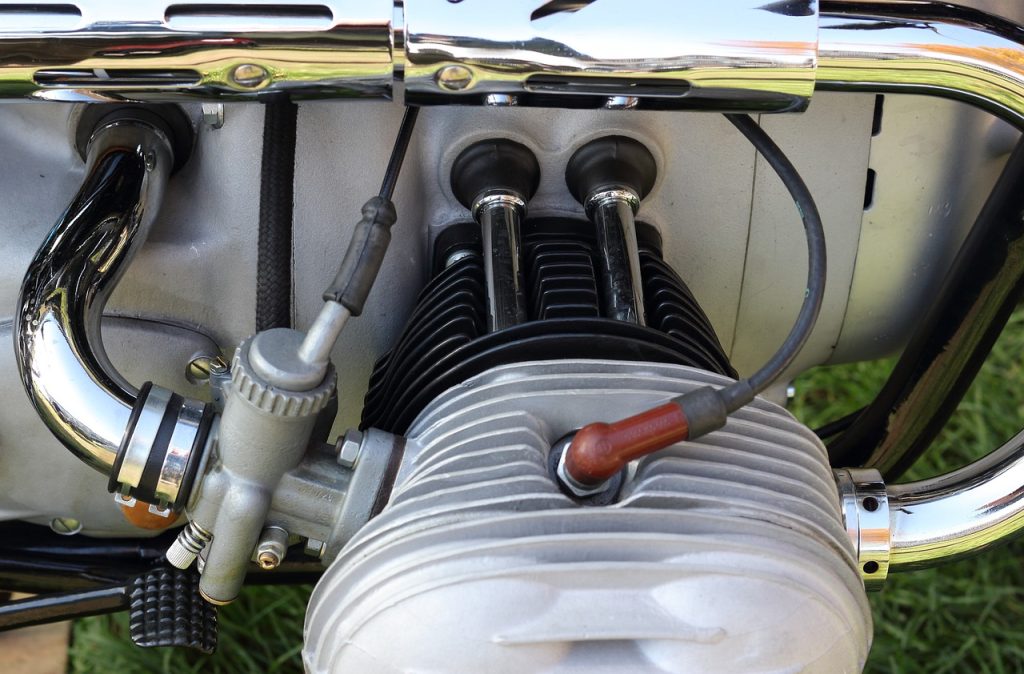The spark plug plays a crucial role in the proper functioning of an engine. These small parts play a pivotal role in the functioning of your vehicle, whether it’s a car, motorcycle, lawnmower, or even a chainsaw. Spark plugs create tiny sparks of electricity that ignite the air-fuel mixture in your engine’s cylinders and set off the controlled explosions that power your vehicle.
A relatively common and frustrating issue that vehicle owners encounter is when the spark plugs are wet with fuel. The issue with this is that it can have a significant impact on your engine’s performance and fuel efficiency. It can lead to sputtering, reduced power, and increased emissions.
In this article, we take a closer look at why spark plugs are sometimes wet with fuel. We will discuss the root causes of this problem, how it affects your engine’s performance, and of course discuss how you can address this issue.
The Spark Plug’s Role
Before we look into the issue of why your spark plug might be soaked in fuel, let’s first take a look at the role components play in the internal combustion engine.
In short, a spark plug is the ignition switch for your engine’s power. When your engine’s pistons compress a mixture of air and fuel within these cylinders, the spark starts working.
The spark plug’s primary function is to initiate combustion. It does this by generating an electric spark at just the right moment. This spark serves as the catalyst and ignites the air-fuel mixture which releases an explosion of energy. This is ultimately what drives your engine’s pistons, rotating the crankshaft and powering your vehicle’s wheels.
The spark plug’s gap is the space between its central electrode and the ground electrode. This is a critical factor in determining the quality of the spark. The ignition system’s timing mechanism ensures that the spark occurs at the precise moment when the piston is at the top of its compression stroke which allows for maximum power generation.
Common Causes of Wet Spark Plugs
Now that we have a better understanding of the spark plug and its role in your engine, let’s take a closer look at some of the common culprits that can cause the spark plug to be soaked in fuel.
Fuel System Issues:
- Fuel Injector Problems: Fuel injectors are responsible for precisely delivering fuel into the combustion chamber. If one or more injectors malfunction or become clogged, they can spray excessive fuel into the cylinder. This may lead to wet spark plugs.
- Carburetor Issues: In older vehicles equipped with carburetors, a faulty carburetor can cause an imbalanced fuel-to-air ratio. This can lead to a rich fuel mixture that can flood the combustion chamber and wet the spark plugs.
- Fuel Pressure Regulator Malfunction: The fuel pressure regulator ensures that the correct fuel pressure is maintained in the system. A malfunctioning regulator can cause excessive fuel pressure, resulting in fuel being forced into the cylinders and wetting the spark plugs.
Ignition System Problems:
- Weak Spark: A weak or insufficient spark from the spark plug can fail to ignite the air-fuel mixture effectively. This can occur due to worn-out spark plugs, damaged ignition cables, or a failing ignition coil.
- Faulty Ignition Coil: The ignition coil generates the high-voltage spark needed to ignite the fuel. A malfunctioning ignition coil can lead to weak or inconsistent sparks. Tis can also cause incomplete combustion and wet spark plugs.
Engine Problems:
- Low Compression: If the engine’s cylinders have low compression, the air-fuel mixture may not be adequately compressed for ignition. This can result from worn piston rings, damaged cylinder walls, or faulty valves.
- Valve Problems: Damaged or stuck valves can disrupt the airflow in the cylinder, affecting the air-fuel mixture. Valve issues can lead to an incomplete burn and wet spark plugs.
Environmental Factors:
- High Humidity: In humid conditions, moisture can accumulate in the intake system. This can affect the air entering the engine. Ultimately, the result may be incomplete combustion and wet spark plugs. This is particularly true during cold starts.
- Cold Weather: Cold temperatures can affect the vaporization of fuel, making it harder to ignite. This can result in a rich mixture and wet spark plugs. This issue is particularly common in colder climates.
Improper Engine Operation:
- Over-Choking: Using the choke excessively in carbureted engines can flood the combustion chamber with fuel, leading to wet spark plugs.
- Excessive Idling: Extended idling without load on the engine can result in incomplete combustion and fuel buildup on the spark plugs.
- Incorrect Fuel-to-Air Ratio: An improper air-to-fuel ratio, either too rich or too lean, can lead to combustion issues and wet spark plugs.
Diagnostic Steps
Let’s dig into the steps you can take to diagnose and address this issue of wet spark plugs.
Visual Inspection of Spark Plugs:
- Start by carefully removing the spark plugs from your engine.
- Examine the condition of each spark plug. Look for signs of wetness, including a visible presence of fuel on the plug’s electrode.
- Pay attention to the color of the deposits on the spark plug. Black deposits typically indicate a rich fuel mixture, while white or light-gray deposits may suggest a lean mixture.
Testing the Ignition System:
- Check the spark plug gaps. Ensure they are the same as the manufacturer’s specifications.
- Test the ignition system by turning the engine over with the spark plugs removed. Observe the spark at each spark plug hole to ensure it is strong and consistent.
- If you notice weak or erratic sparks, investigate further. Check ignition cables, coils, and the ignition timing.
Checking Fuel System Components:
- Check the fuel injectors or carburetor for any visible issues or signs of clogs. Clean or replace components if necessary.
- Test the fuel pressure using a fuel pressure gauge to ensure it falls within the specified range.
- Inspect the fuel pressure regulator for proper functioning.
Compression Test:
- Perform a compression test on each cylinder. Low compression could indicate engine problems such as worn piston rings, cylinder wall damage, or valve issues.
- Compare compression readings between cylinders to identify any significant discrepancies.
Analyzing Environmental and Operational Factors:
- Consider the environmental conditions in which the problem occurs. If it’s related to high humidity or cold weather, take steps, if possible, to mitigate these effects.
- Evaluate your driving habits and engine operation. Are you overusing the choke? Is there excessive idling? Correct any improper practices that may be contributing to wet spark plugs.
- Monitor your air filter. A clogged or dirty air filter can affect the air-to-fuel ratio and combustion.
Prevention and Maintenance
To prevent wet spark plugs in the first place as well as maintaining their optimal performance is done proactively. This can ultimately save you time, money, and the trouble of troubleshooting. Here are some tips to keep your spark plugs dry:
Regular Maintenance Schedule:
- Follow the manufacturer’s recommended maintenance schedule for your vehicle. This includes regular spark plug replacement at specified intervals.
- Maintain a log of maintenance tasks to ensure you don’t miss critical milestones.
Keeping the Fuel System Clean:
- Use high-quality fuel and consider occasional use of fuel system cleaners to prevent injector or carburetor clogs.
- Replace fuel filters as recommended to ensure clean fuel reaches your engine.
Addressing Ignition System Issues Promptly:
- Keep an eye out for signs of ignition system problems, such as rough idling, misfires, or decreased fuel efficiency.
- If you notice any of these issues, address them to prevent further damage to your spark plugs and other engine components.
Monitoring Environmental Conditions:
- Be mindful of the weather and environmental conditions. In high-humidity or cold environments, you may want to consider using a block heater or taking measures to reduce moisture intake into the engine.
- If you anticipate extreme weather conditions, consider storing your vehicle in a garage or using a car cover.
Proper Engine Operation Tips:
- Avoid excessive use of the choke, especially in modern fuel-injected engines. Use it only when necessary during cold starts.
- Minimize idling and unnecessary prolonged warm-ups, as these can lead to incomplete combustion and fuel buildup.
- Familiarize yourself with the recommended starting and operating procedures outlined in your vehicle’s owner’s manual.
Fixing Wet Spark Plugs
Discovering wet spark plugs can be frustrating but fortunately, it’s possible to resolve this issue. Let’s take a look at the steps needed when your spark plugs drenched in fuel.
Cleaning and Drying the Spark Plugs:
- Gently remove the wet spark plugs from the engine using a spark plug socket and extension.
- Inspect the plugs for any signs of damage or excessive wear. If they are severely worn or damaged, it’s a good idea to replace them.
- If the spark plugs are salvageable, use a wire brush or a specialized spark plug cleaner to remove the excess fuel and carbon deposits from the electrodes. Ensure they are thoroughly dry before reinstalling them.
Replacing Damaged Spark Plugs:
- If the spark plugs are in poor condition or cleaning doesn’t resolve the issue, it’s advisable to replace them with new ones.
- Choose spark plugs that meet your vehicle manufacturer’s specifications in terms of type, heat range, and gap size.
Underlying Issues:
- Investigate the root cause of the wet spark plugs. Refer to the diagnostic steps mentioned earlier to identify and address any fuel system, ignition system, or engine problems that may have contributed to the issue.
- Repair or replace any faulty components, such as fuel injectors, ignition coils, or valves, to prevent a recurrence.
If you’re unsure about diagnosing or resolving the issue, or if it’s beyond your expertise, it’s wise to seek help from professional assistance from a qualified mechanic. They will be able to perform a comprehensive inspection and perform necessary repairs or replacements.


